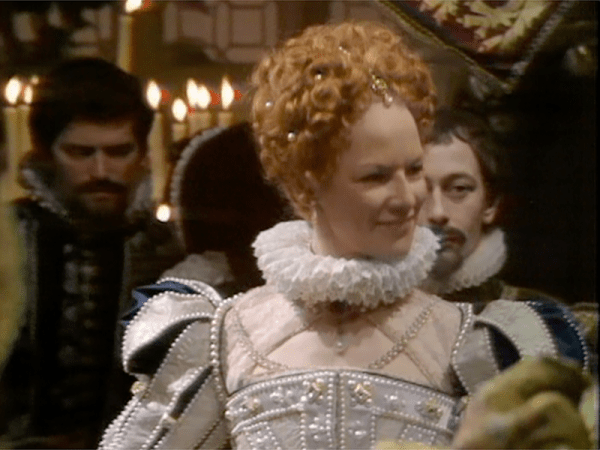
Support Frock Flicks with a small donation! During Snark Week and beyond, we’re grateful for your monthly pledges for exclusive content via Patreon or your one-time contributions via Ko-fi or PayPal to offset the costs of running this site. You can even buy our T-shirts and merch. Think of this like supporting public broadcasting, but with swearing and no tax deductions!
One of our running jokes at Frock Flicks is about “kicky shrugs” worn in place of sixteenth-century partlets. See, partlets are (in my opinion) one of the most fabulous aspects of the era’s womenswear. But filmmakers seem very confused by the concept, and often substitute what looks much more like a modern shrug jacket instead. Let’s run down what a partlet should and could look like, and then who’s gotten it right and who’s gotten it wrong! Because yes, it’s a smaller detail than some of the other shit filmmakers get wrong about this era, but it’s a personal pet peeve.
Trystan did address this issue briefly in her discussion of the travesty that was 2018’s Mary Queen of Scots. But I feel like it’s one that needs more focus! In part, that’s because it relates to another of our repeated maxims: ruffs don’t float. Filmmakers seem to think that a ruff just ties around the neck as a self-contained item, but for most of the 16th century, it was attached to a partlet.
According to Janet Arnold’s Queen Elizabeth’s Wardrobe Unlock’d,
“Partlets were originally short jackets worn by men, but from the late fifteenth century the term was used for a garment which covered the upper part of the chest and neck. Women’s partlets were made with standing collars in material to match the gown from the 1530s to the 1550s… [They] slowly went out of fashion after about 1580…”
They could match or contrast with the gown, and sometimes matched the (detachable) sleeves — but importantly, they did NOT themselves include sleeves, but were ALWAYS sleeveless.











And this is what it is NOT:
Now, let’s take a look at films that have gotten partlets right! Because we give props to those who do:














And now, the slightly to very, very bad:












Now you too can snark the finer points of 16th-century partlets! Let us know if you’ve spotted any other shrugs instead of partlets in the comments.










I really don’t see why it is so damn difficult to get right!!! Lmao. I know from experience that a partlet is one of the easier items of clothing to create – cut and stitch – for a woman’s wardrobe of this period. I am always a little taken aback when I see those ‘kicky shrugs’ used in historical flicks and I wonder which source material they are misreading and getting so horribly wrong. Maybe, perhaps, it is a degree of wishing to make the costumes more “relatable” (arrrrgh!) by bunging their lead actresses in bizarre bolero jackets… but it is just so wrong, wrong, wrong and looks terrible and ill designed. It is possible to do, as your fantastic examples above prove, so why don’t they do it? Bah, I say!
That see-through item in the Girolamo Mazzola Bedoli portrait does look much more like a fichu/neck-handkerchief than a partlet.
Okay, you’re right!
Is a gollar considered a partlet? Because painting #2 looks like a gollar. Which is as far as I can tell 1) rounded, 2) wool or silk and lined with fur and thus for keeping warm and 3) a 16th century German thing. Whereas my partlets are much thinner and used to 1) not sunburn the boobs and 2) be pretty and decorative, since one of mine is very embroidered but the shirt is not.
I’d say they’re the same thing, although the German gollar has specific stylistic elements (generally rounded)?
I’m curious because in the “Unknown Lady” art, she’s wearing two different styles of partlet at the same time; the sheer-with-ruff one, and the fabric one. Was that a thing?
(In the gawdawful kicky denim shrug pic at the top, you can see something vaguely sheer under it, so maybe that’s what they were going for? Dunno, can’t see past all the denim.)
Okay, good point! Maybe she’s wearing a partlet AND a gollar?
Functionally, this feels kind of like the 16th century equivalent of a dickey collar.
Like this! If you wore it outside your top instead of inside, it really would be a 21st-century partlet.
https://www.patra.com/Products/ABIBC/silk-neck-and-chest-warmer
One point of confusion for me in your very informative article, The Pelican Portrait looks to me like a fine, white linen, partlet-styled chemise with blackwork and gold thread embroidery. Could be my eyes, could be my tablet, but I don’t see how the sleeves are different than the fabric on chest and neck. Of course as Queen, she is the fashion setter. Could you please enlighten me?
It may be a full shirt.